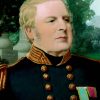Captain John Hindmarsh, who was eventually knighted by Queen Victoria, became the first vice-regal representative of the British Crown to set foot in the new province of South Australia.
So proud to be the first governor to take up an appointment, rather infamously he became the first to be recalled. He was not, however, the first to be considered. Prior to the new position being gazetted, Colonel Charles James Napier, who briefly held the post of Chairman of the South Australian Association (1833–1835), had both the approval of the South Australian Colonization commissioners and the Colonial Office to be the first to take up the appointment as governor. After nominally accepting the position, Napier ultimately declined the offer. A more desperate, self-seeking and largely apolitical Captain Hindmarsh rushed to apply for the post.
The life of Sir John Hindmarsh can be divided into five distinct periods: his time as a junior naval officer between 1793 and the end of the Napoleonic wars in 1815; a period of marital domicile in both England and France; a return to naval service as Commander of HMS Scylla in 1831; his time as Governor of South Australia; and finally a sixteen-year sinecure as Governor of Heligoland in the North Sea.
Hindmarsh was born in 1785 and was destined to a lifetime associated with the sea. Barely out of swaddling clothes and a mere child of eight, he joined his father, also named John Hindmarsh and a gunner, on the HMS Bellerophon.
In the Battle of the Nile in the Bay of Aboukir, just off the coast of Alexandria, Admiral Nelson and his fleet had finally caught up with Napoleon after the French Emperor had sacked Malta. During this battle with Nelson, Napoleon’s ship caught fire and the Bellerophon,which had taken a heavy battering from the French, became entangled in the conflagration. The young Hindmarsh, little more than a slip of a lad volunteering on the Bellerophon, at 13, was the most senior officer on deck. Seeing the danger of being dragged into an almighty explosion, he ordered the anchor cable to be cut and the spritsail to be set. The Bellerophon gradually drifted from harm’s way as Napoleon’s ship burned ferociously before sinking to the bottom of the bay with all its loot. Hindmarsh lost an eye in the battle and was eventually accorded an introduction to Nelson, who presented him with a sword of honour and congratulations for his bravery, but little else. It would be fifty-six years later before Hindmarsh gained any recognition for being part of that great victory.
Hindmarsh’s most active period of naval service mirrored the time between the rise and fall of Napoleon. In all, he took part in the capture or destruction of more than forty enemy ships. He was a tough, battle-hardened naval man who witnessed some of the most brutal floggings and severe discipline ever meted, which helps explain how he later felt no restraint in provoking some of the young sailors on the HMS Buffalo en route to Adelaide in an unseemly pugilistic encounter. Any softness he might have possessed was quickly set aside as he matured into a gruff, abrupt, outspoken and bombastic persona. Yet beneath his rambunctious exterior, Hindmarsh was a family man and a self-declared teetotaller.
After Waterloo, Hindmarsh was invalided to the sidelines and in 1815 promoted to commander. He had no ship, which was not unusual, as there were more than 800 other unemployed commanders pensioned off on half-pay after the defeat of Napoleon. Hindmarsh withdrew into family life in England, always expecting to be called to service again.
His marriage to Susannah Wilson Edmeades on 4 November 1809 in Strood, Kent, produced three daughters: Jane, Susan and Mary, and a son also called John. John and Susannah lost a firstborn son, who died during infancy in 1816. He only had a meager part-pension on which to rely, and to obviate the hardship they experienced while living at Portsea he moved his family to France, where living costs were cheaper. There, in the small village of Ancenis on the River Loire, Susannah delivered him their youngest child, John, in 1820.
It was sixteen years before Hindmarsh took charge of his first ship as a Junior Captain. Throughout the long period of successive Tory governments in the early part of the nineteenth century and until the dawn of electoral reform in the 1830s he had no patronage of which to speak.
As the Whigs gained momentum before eventually coming to power on the back of the Reform Bill of 1832, Hindmarsh’s fortunes began to change. In mid-to-late 1831 he met Colonel Light in Malta, and when the Egyptian Pasha began looking for someone to head up the Egyptian Navy, Hindmarsh came under consideration, ostensibly because of Light’s patronage. From this position it was a short but circumstantial leap into the unexpected role as Governor of South Australia.
Despite his Whig sympathies Hindmarsh could not abide the more radical elements of the Reform Parliament. On his appointment as Governor, he was warmly received by those at the Adelphi, even though he didn’t come with a recognisable public reputation. Most who met him for the first time were impressed by his affable demeanour and good intentions, and buoyed by the euphoria associated with the appointment. Some were so pleased they let it be known that their Governor-elect should be knighted before departing.
However, it would be another fifteen years (on 7 August 1851) before Queen Victoria dubbed him Sir John Hindmarsh, making him a Knight Bachelor, the lowest of ten ranks entitling him to be called ‘Sir’. On his appointment as Governor, however, and with the patronage of Admiral Sir Pulteney Malcolm, he was made a Knight of the Hanoverian Guelphic Order, an honour issued by the German principality where Queen Adelaide was born.
As the first ships were being prepared to depart for the colony, Hindmarsh’s unmistaken vitriol was felt. Only months later, when the first ships and the Buffalo had arrived in Gulf St Vincent and in a tent behind the sandhills at Holdfast Bay, he let it be known that he had no time at all for the likes of John Arthur Roebuck and his disciples, namely John Brown, John Morphett, James Hurtle Fisher, Robert Gouger and others who were all considered intolerable radicals. This position was also entirely consistent with the contempt that Hindmarsh developed for Colonel Robert Torrens and James Pennington in the weeks before departing England, especially when they conspired to exclude him from sitting in on the deliberations of the South Australian Colonization Commission.
As things began to sour for Hindmarsh at the Adelphi, especially when he was refused a seat at the table with the commissioners, the Secretary to the Commission Rowland Hill, and George Strickland Kingston, Brown and Morphett had predicted as early as November 1835 that they were in for a period of ‘quarterdeck’ government. At that time they discussed using the Statistical Society of London as an instrument in the colony. Essentially, these young employees of the Commission began keeping numerical and other records of everything Governor Hindmarsh said and did, both on the voyage and when in the colony.
Apparently Hindmarsh was not aware of this surveillance. Just weeks after Hindmarsh’s appointment those instrumental in the Statistical Society astutely concluded that their Governor was going to attempt to ‘govern’ the colony in his own right and was to a large degree self-seeking in a financial sense, even though he had very little money of his own.
It is important to understand the relationship between Hindmarsh and George Fife Angas, who had advanced Hindmarsh considerable sums of money and thus became tied to the support of the South Australian Company against the commissioners. Hindmarsh was grateful for the loan from Angas, which enabled him to take up a significant number of land orders in the colony.
This and associated events sparked the genesis of the now infamous dual government, whereby both the governor representing the Crown and the resident commissioner representing the colony through the Commission operated with fatal consequences in the fledgling colony.
As Hindmarsh became more and more autocratic in his dealings with some of the junior employees of the Commission, his frustration and disillusionment mounted. He turned his appointment into a rort from which to launch a series of speculative real estate investments. Unsurprisingly, this ultimately led to his recall by the Colonial Office on the recommendation of the South Australian Colonization Commission for trying to undermine the principles of the South Australia project.
Governor Hindmarsh progressively alienated some of the favoured sons of Colonel Torrens and the other commissioners. The small Legislative Council was decimated and Hindmarsh set about appointing his own replacements.
As far as Sir John Hindmarsh’s contribution to the street names and places of the city of Adelaide is concerned it must be said that although he was overruled at almost every turn, his contribution remains highly significant, especially the foresight to send a letter to King William IV suggesting a name for the capital of the colony (either himself or Queen Adelaide). On the day the Street Naming Committee sat in 1837, Governor Hindmarsh was not so influential, despite obviously having a hand naming Pulteney Street and most likely supported the nominations of Jeffcott Street, Strangways Terrace and O’Connell Street.
After Governor Hindmarsh had been recalled, the Colonial Office offered him an appointment of limited tenure as Lieutenant Governor of Heligoland. This was tantamount to an insult because Heligoland is an island in the North Sea, little bigger than a postage stamp. The appointment can only be described as an isolated sinecure, a convenience for the Colonial Office, and a punitive incarceration for one seen as a potential troublemaker.
Here Hindmarsh was reduced to a squabbling overlord, occasionally resorting to pugilism. He spent nearly seventeen years in Heligoland, most of them peacefully.
In 1856 his superiors at Greenwich promoted him to the rank of Rear Admiral. With the introduction of war medals by the British Government, Hindmarsh was also finally given the naval acclaim he deserved. He was rewarded with seven clasps for distinguished service in as many engagements, only one less than the most highly decorated Naval Officer.
In November 1856 he was advised of his retirement and Sir John and Lady Hindmarsh left Heligoland on 7 March 1857. The retirees settled in Hove, Sussex, but after Lady Susannah died on 2 April 1859, Sir John moved to London where he took a room in Piccadilly.
Only a few months later, on 29 July 1860, he shed his mortal coil. He was buried at the Old Church, in Hove.







Comments